Big changes are coming.
You are replacing your legacy systems, which will require every employee in your organization to undergo training. Or maybe a new market trend is pushing you to alter your business strategy. Perhaps a new industry regulation requires you to change something about your service.
Whatever the scenario, chances are your business will need to undergo change. Transformation, whether small or large in scale, has the opportunity to improve your business performance and internal processes. But if change management is mishandled, it can wreak havoc.
Change gone wrong: A common scenario
Let’s focus on one relatable example. You’re leading your company through a merger. You and your colleagues are excited about the new technological capabilities and services your combined business will offer. You create the terms of the deal, get approval, and sign.
But the rest of your new company, which is now composed of 1,500 employees, doesn’t share your enthusiasm.
There is tension in the office. Your managers, unsure of how a potential restructure will affect their jobs, feel anxious and worried. Your staff are showing resistance toward learning new processes and digital software.
All of the positive changes you wanted to bring to your company have now come to a screeching halt. You cannot drive the business forward. In fact, the distressed energy is lowering productivity and engagement.
What went wrong? You may ask yourself. The short answer: lack of change management and leadership.
Change happens fast. Are you ready?
In the digital era, change occurs at unprecedented speed. Entire industries have the potential to change overnight.
As leaders identify the need to change — whether that means a merger, implementing new enterprise software, adding service lines, or changing their approach to customer service — they must have the ability to lead change fast.
In some cases, this means companies must pivot their strategic plan with little notice and uncertainty. To do so, they need an effective change management infrastructure.
A change management definition for modern leaders
Change management consultancy Prosci defines change management as: “The process, tools, and techniques to manage the people side of change to achieve a required business outcome.”
It sounds simple, right?
But the “people side of change” is what makes this complicated. Coming up with new processes, workflows, and ideas is not the hard part. It’s about getting 50, 200, or sometimes thousands of employees to adopt them.
Whether you are implementing new enterprise software, onboarding employees, merging, or restructuring, you need a thoughtful approach to change management.
You need strong alignment between company strategy, leadership, culture, and behavior.
Successful change management demands a deliberate approach
You know from experience how quickly technology, customer demands, and business opportunities can change. You have likely identified areas where your company must change to better meet new challenges.
But many companies still lack the framework required to implement change successfully.
According to McKinsey, 70% of change management efforts fail due to employee resistance and lack of management support.
A failure rate this high means all of the time, money, and resources devoted to a given change will most likely go to waste. With the vast majority of executives expecting to implement more change initiatives in the next two years (86%), the need to create a change management infrastructure is vital.
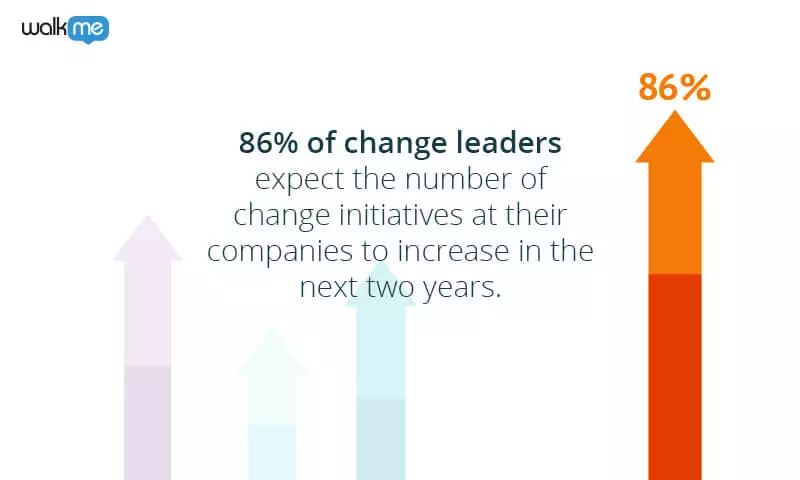
In this article, we will examine in depth why change efforts fail, how employees think about and respond to change, and how to ensure your future change efforts succeed.
Why change fails
There are several barriers to organizational change that can stand in the way of your initiative.
1. Overzealous leadership
When performance is low, leadership teams often feel an urge implement change just to make something happen, without putting enough thought into which changes are most important.
This eagerness often comes from the misconception that if a company is low-performing, it must be doing everything wrong, while high-performing companies are doing everything right. In reality, high-performing companies just focus on doing the most important things right, and correct the less critical imperfections over time.
2. Seeing change as a threat instead of an opportunity
When employees don’t understand the reason or benefits of a proposed change, they will see it as a threat. They will worry the change will create undue stress in their workflow and jeopardize their productivity and performance. The consequence of this is resistance to change (more on this later).
3. Lack of transparency and inadequate communication from leaders
Communication is an evergreen leadership trait, but it’s even more vital during change efforts. Although the need to reform processes or strategy might be clear to the CEO, chief of finance, and other senior leaders, the rest of the organization may not have access to the information that explains a proposed change. An opaque leadership style will make it difficult to rally employee support.
4. Not taking employee input
Employees are more likely to reject change if they feel they were left out of the change process. Not inviting employee input not only makes them feel excluded, it eliminates the opportunity to gain valuable insight from the people on the frontlines.
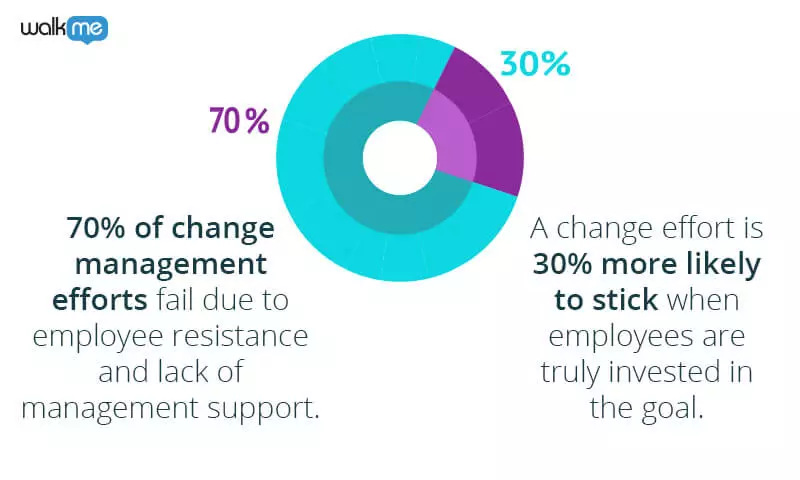
5. Rigid organizational strategy
One barrier to organizational change that is often overlooked is the unwillingness among leaders to amend strategy as new internal and external forces emerge.
Leaders must remember that the conditions that called for transformation in the first place are subject to change as time goes on. That means while thoughtful planning is important, the strategic plan must have enough flexibility to bend without breaking.
6. Inadequate preparation
Implementing change requires significant resources, including time, energy, and money. After the leadership team designs the organizational change, they must take the necessary planning steps.
They should have plans in place that will answer these key questions:
● Who will the change impact?
● What kind of training or education will they need?
● How much will employee training cost (in time and money)?
● What is the training timeline? How will it affect employee workflow and productivity?
A deep dive into employee resistance to change
Employee resistance is perhaps the most common and powerful obstacle to effective change. It has the potential to thwart even the most carefully crafted change initiatives, and therefore demands greater attention from change managers and senior leaders.
It is human nature to resist change, especially when things seem to be going fine.
Why rock the boat? Why disrupt the status quo?
Change not only forces people to face something that is unfamiliar, it creates the possibility for failure. Yet we all know that “status quo” means mediocrity, and in an increasingly competitive business landscape, mediocrity means failure.
Why employees resist change
There are four main reasons employees resist change. Each of these boils down to a sense of fear and uncertainty.
While complex in nature, understanding these fears gives leaders a good starting point for easing resistance.
1. Fear of the unfamiliar
People cling to what’s familiar because familiar is comfortable.
When this sense of stability is threatened, they will start to feel anxiety about the change, which quickly translates into resistance.
To remedy the underlying anxiety, it’s important to be clear and open about what is going to change. Don’t keep your employees in the dark, especially if they will be directly affected by what’s to come.
2. Fear of incompetence
Your employees have worked hard to learn the processes and acquire the skills necessary to succeed in their roles. When a proposed change demands they do things differently, employees might fear they won’t know how to perform at the highest level.
It’s leaders’ responsibility to provide support and resources so employees can succeed under new expectations. Give your staff proper training and time to adjust to the changes.
3. Fear of failure
Everyone fears failure. Employees are not only worried about messing up while doing something new, they fear the broader consequences that threaten the hard work they’ve already done. They fear losing their bonus, getting skipped over for a promotion, and even being laid off.
Helping employees overcome this fear requires a hefty dose of compassion. Implement changes incrementally, and create policies that allow for mistakes during the transition. Make it clear that you understand change come with a period of confusion, and that work is a safe learning environment.
4. Fear of losing status
Changes often alters the team structure, which could affect who reports to who, or who gets to make the final decision on what. Employees might be worried that a given change will threaten the status they’ve worked hard to earn.
In this case, it’s important to make an effort to preserve the status of those who will be impacted by the change.
How to build a change management infrastructure
Creating a framework to guide change is critical to success in the digital era.
Here are four tips for creating a strong change infrastructure.
1. Understand the psychology of change management
So many enterprise-wide change efforts fail because leaders don’t understand the human mechanics involved.
Research shows that organizations that employ the “Influence Model” have more success with their change management efforts, according to McKinsey. The Influence Model includes four components:
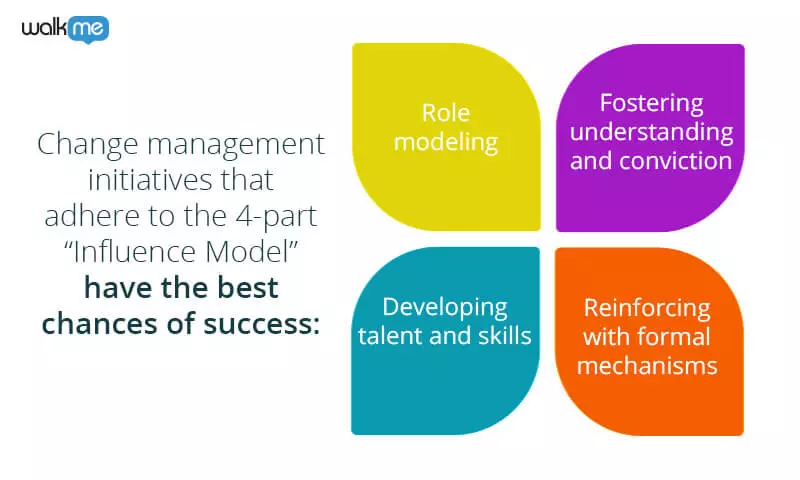
Access to strong role models
Whether consciously or unconsciously, people mimic the behavior of those around them. Someone who serves as a clear positive influence will be even more influential to your employees.
True understanding of the change
People will be more inclined to change their behavior if they truly understand the “why” behind a change.
Talent development opportunities
A change is a great opportunity to invest in employee development. By giving employees opportunities to enhance their skills, you will not only equip them to handle change, you can improve business performance.
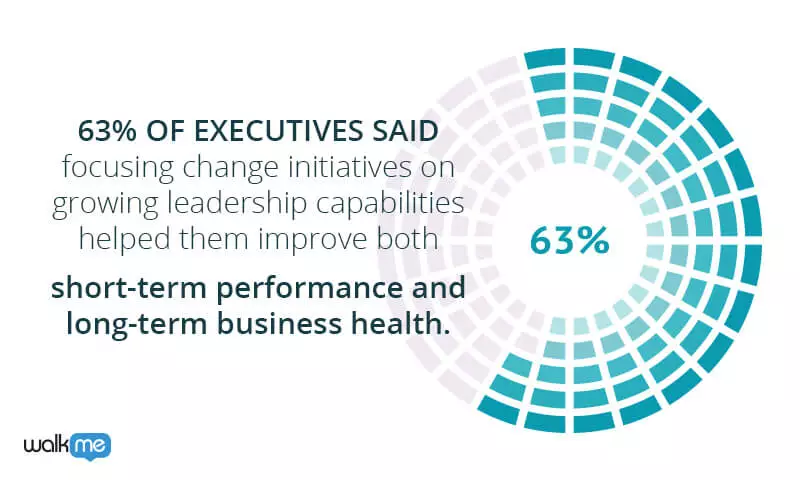
Formal reinforcement mechanisms
Employees will begin to associate the desired change with positive outcomes, such as rewards and positive feedback. They will also associate other, non-desirable behaviors with negative consequences, and avoid them.
2. Develop change leadership and champions
Everyone in the organization looks to the CEO and other senior leaders for support and direction during a transformation. They are the ones who set the vision, outline the path, and measure the success of a change.
Leaders must show that they truly believe in and are committed to the change.
“If change is to have credibility within an organization, it must be congruent with the actions of its leader.”
McKinsey
While change should always be led from the top, collaboration is beneficial. Large groups of people can brainstorm to come up with a creative change initiative.
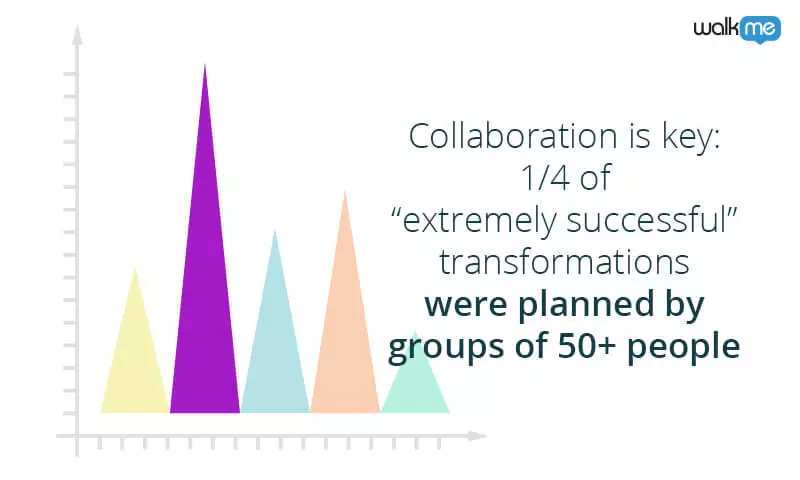
Change champions, or trusted individuals throughout the organization, are also important for driving a transformation. Identify credible people at various levels in the company and ask them to vocalize their authentic support of the change. The power of influence should not be underestimated.
3. Create a change culture
Leaders must be explicit about the values, behaviors, and goals for the organization.
Accountability
One of the most important values for fostering a change culture is accountability. To embed a genuine sense of ownership in the organization, leaders must set the tone and over-perform in favor of the change. They need to demonstrate more than just passive agreement and serve as an example for everyone else.
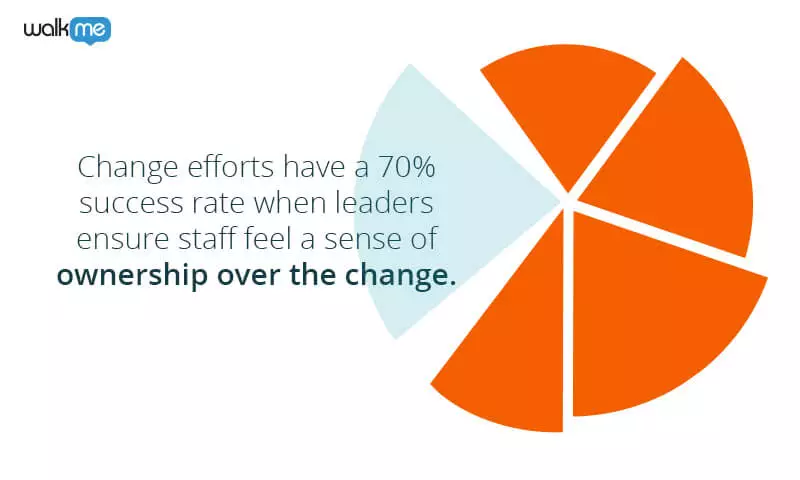
Leaders can cultivate accountability by inviting others to craft solutions to problems. They can reinforce it with incentives and rewards.
Agility
Business agility is a critical trait for organizations in the digital age. Agility is the ability of an organization to move from strategy to execution quickly, while being open to amending plans to best meet any situational factors that arise.
It requires a high degree of flexibility, rapid testing and decision making, confidence doing things without 100% certainty, and the willingness to course correct. Several change management exercises could help employees become more agile.
Innovation
Change cultures embody a spirit of innovation. This doesn’t only mean adopting innovative change management tools, though this is also important. To encourage employees to embrace an innovative mindset, leaders must give them opportunities to develop one.
For example, they can host “innovation summits” or “hackathons” in which employees are asked to quickly brainstorm and plan initiatives to address real-world problems. They can reward this work by implementing and rewarding some of the best ideas.
4. Set up a feedback and adjustment structure
An effective change management infrastructure includes goals, milestones, and assessments for measuring progress and assessing efficacy. Part of this includes asking employees and managers for feedback. Their opinions and ideas can provide value insight to inform necessary modifications.
This feedback structure must be open and dynamically responsive. It should enable changes to the plan, such as restructuring work processes, introducing new capabilities, or even creating new roles.
Take a humanistic approach to change management and thrive in the digital era
When you break it down piece by piece, effective change management is a matter of logic. But implementing it is an art.
The most important thing to remember is that without support from employees — without easing their fears and empowering them to take ownership — you will likely face resistance.
On the enterprise scale, driving successful change is hard. There are a variety of change management software that offer guidance and support. When your organization needs to change, don’t forego tools that can help.


